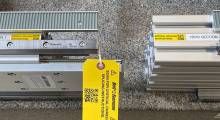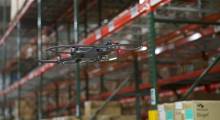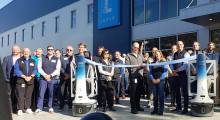Delivering to customers at home is inefficient and expensive than delivering B2B.
Logistics Service Providers have to carry single packages to high and low-density areas, and often in B2C, the resident isn’t a home.
Yet customers are demanding faster and cheaper deliveries.
Logistics Service Providers (LSPs) are actively trying to perfect the last mile in order to keep up with greater consumer demands.
What more can you expect for last-mile delivery in the near future
1. Faster Fulfillment
There’s an emphasis on logistics and fulfillment due to an increase in on-demand or same-day delivery. There is a huge push and pressure on the fulfillment side to get orders turned around on a much faster scale and pace than a lot of the technology is capable of doing today.
What normally would have taken less than an hour, all of the sudden needs to go out within minutes, which poses challenges in terms of planning. Examples include pharmaceuticals and food delivery. Customers want a window of delivery within a few hours. By the time the order comes in, it has to be processed and ready to go, to meet the narrow window,
2. Gig Economy/Crowd-Sourcing Apps
There’s no better way to demonstrate the rise of the gig economy and use of crowd sourcing apps than by looking at at the steep rise in last mile delivery solutions, especially in the urban logistics sectors. Investments have quadrupled in the last two years in this area.
UberRUSH for parcels, Postmates, Deliv, Lynk and Amazon Flex provide spot-market deliveries by independent drivers are examples of the changing landscape. LSPs tender delivery jobs on their apps to alert drivers.
Picking up and delivering ad hoc isn’t as efficient as delivering something where you have strong route management, with items in your truck and you know where you’re going. But technology overcomes this challenge to leverage vehicle utilization, and those with a bike who want to earn extra money can also do so.
These services have limited geographic reach and are not yet widespread like the legacy carriers. Usually, they deliver only in larger cities. Investors are interested in companies based on information and technology, not on assets like vehicles.
They are focused on companies using analytics and information to figure out how to do the job for less, and leveraging drivers with their assets as excess capacity. There will be a battle between the guys with the buildings and assets, versus the guys with the apps and information. The winner will be a combination of both.
3. Focus on Visibility
Legacy LSPs have improved traceability, with proof of delivery and tracking information. Regional and local last-mile delivery organizations don’t necessarily have the technology bandwidth to provide that data. So one ends up with a mishmash of data requirements for how to communicate with them, and it makes it a lot more challenging.
That data is important for traceability if a package is late or gets lost. But smartphone apps have revolutionized the process for tracking with GPS. Now, customers can see where the driver or package through simple and cost effective proof of delivery with signature capture at the point of delivery.
Although the process is not yet standardized across the board, consumers will increasingly demand the industry move in this direction.
4. Postal Service Evolves
Postal Services are changing with the times and continuing to grow. Given declines in mail delivery, increases in e-commerce package delivery couldn’t come at a better time.
Adding a parcel to a home delivery is only an incremental cost to the Postal service since the carrier is going to the house anyway. It’s more expensive for LSP to make that same delivery since it’s an independent stop. Further change may be on the horizon, too, like delivery of restaurant meals by postal services to boost its income further
5. Insourcing Deliveries
An increasing number of companies are using their own or shared vehicles for last mile delivery. Traditionally, shippers weren’t in the transport business. They didn’t own or owned limited trucks or vans or vehicles, but now they’re starting to collaborate with competitors in the regional area, to utilize each others’ transportation assets.
LSPs now have their own local delivery services as well. They have their own vehicles and drivers on the payroll for local, not long haul, deliveries. Collaboration with LSPs can also be seen as a realistic possibility in the near future.
6. City Warehouses
The growing trend is for organizations to build or take advantage of urban warehouse space and have easy access to products for fast customer deliveries. That is the only way you can reduce the speed of deliveries or transit time.
7. Carrier Becomes Salesman
Using Big Data, retailers can predict what else a customer might want, even if they didn’t order it. The concept of a mobile warehouse is gaining steam. The driver can load non-committed inventory into delivery trucks, allowing drivers to upsell during the delivery process.
The driver can bring items the consumer has ordered in the past or might need or want, processing a potential additional order in person. This has started for food and grocery as well as with household commodities and even pharmaceuticals.
8. Smart Technology and Sensors
In addition to wanting visibility at each point in the fulfillment and delivery process, customers want to track temperature sensitive items. This way the pharmaceutical company, frozen foods or spirits manufacturer will know the probe temperature and possibly the humidity level at every step.
Fulfillment centers use weather data for planning, to add additional packing materials to account for temperature variation.
9. Delivery by Self-Driving Cars, Drones and Robots
While these futuristic delivery options are being developed and tested, they’re not yet trending. But keep your eyes on them for the future. If parcels can be delivered by autonomous vehicles or drones, that will change the game considerably.
The highest cost in delivery is labor, which accounts for 60% of the cost. Deliveries are currently limited by labor cost, availability, and shifts.
Robotic delivery could be done 24 hours a day. Drone deliveries, however, may have limited use in highly urbanized areas due to regulatory and operational issues.
Robot delivery is already being tested - don't be surprised who you find at your door step when your bell rings the next time!
About the Author
Naval Sabharwal is Global Head of Supply Chain and Logistics at Ramco Systems
White Paper
Uberization of Logistics Has Arrived: Be Distinct or Extinct
In this white paper, we describe why logistics service providers need to deploy technology as a core competence and differentiator and with the use of technology how they can stay ahead of the competition; tackle Uberization and create value for their customers. Download Now!
Article topics
Email Sign Up


















